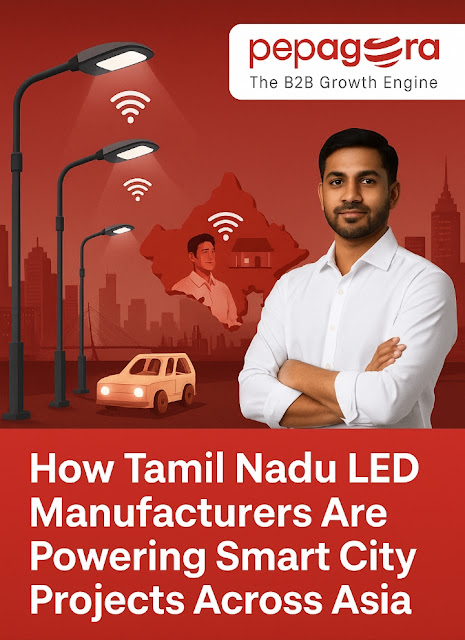How Lighting Exporters Are Positioning Themselves as Global Suppliers
Indian lighting manufacturers have always had the skill. Many have the scale. But exporting is a different game. Competing with global players, attracting international buyers, and meeting trade expectations doesn’t happen with product quality alone.
It takes positioning. And right now, smart lighting exporters across India are learning how to stand out not just as exporters but as trusted global suppliers.
Here is what they are doing right and what SMEs aiming for global growth can learn from them.
Why Positioning Matters in B2B Lighting Exports
There is no shortage of LED bulb makers or decorative light manufacturers in the market. Buyers from the Middle East, Europe, and Southeast Asia have options.
So what gets a buyer to choose a supplier from India?
It is not just about price or speed. It is about trust, professionalism, and clarity. That is where positioning steps in.
Positioning is how you shape how the world sees your business. A strong position makes buyers think
● This vendor understands my needs
● This supplier is ready to deliver globally
● This exporter feels reliable
And that makes all the difference when the buyer is overseas
What Smart Lighting Exporters Are Doing Differently
1. They Present Themselves Like Global Brands
Even small manufacturers are now investing in strong digital presence. This includes
• Professional websites
• Clear product categories
• Certifications and compliance badges
• Export-ready product specs
• Country-wise trade terms
You no longer need to be a big name to look like one. You just need to communicate like one
2. They Build Buyer Trust Digitally
Global buyers cannot visit your factory in person. So exporters are filling that gap with
• Factory walkthrough videos
• Testimonials from previous international clients
• Product testing reports and sample transparency
• Real-time responses and consistent follow-ups
These small steps show that the exporter is serious, ready, and transparent
3. They List on Global and Targeted B2B Platforms
Top-performing exporters are visible where buyers search. This includes
• Niche B2B platforms for lighting and electricals
• Country-specific trade directories
• Global marketplaces like Pepagora dot com with verified SME sellers
• Local partnerships or distributors with online presence
Visibility is no longer optional. It is what gets you shortlisted
4. They Align with Local Preferences
It is not enough to ship. Exporters who thrive study what the buyer’s market needs
For example
• Dimmable options for the EU
• Energy-compliant models for the US
• Cultural design preferences for Middle Eastern markets
This kind of insight leads to repeat orders and long-term contracts
Real Examples
A lighting exporter from Gujarat focused solely on LED street lights for African countries. He built a country-specific landing page, included government tenders in his marketing material, and grew his export revenue by 70 percent in 18 months
Another from Delhi added Spanish and Arabic versions of their product catalogs. They saw higher engagement from those regions and started building relationships with vendors who do not speak English fluently
A decorative lighting fabricator in Mumbai started offering ready-to-brand packaging options for boutique resellers in Europe, giving him an edge without changing his core product line
These examples are not about big budgets. They are about smart positioning
What SMEs Can Do to Start
If you are an SME looking to grow beyond India, here is how to begin
1. Get your product specs and certifications in order
2. Be visible on a reliable B2B platform like Pepagora that supports exporters
3. Create sample packs for potential overseas buyers
4. Learn the top three regions your lighting products can fit into
5. Update your product names and images to meet international expectations


Comments
Post a Comment